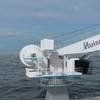Paris MoU Reports Decrease in 'Bans'
Paris MoU reports that 2015 shows a large decrease in the refusal of access (“bans”) within the region: 11 bans compared to 20 in 2014. The detention percentage has remained stable at 3.33 percent. The number of deficiencies has decreased 10 percent related to 2014. The number of inspections carried out was 17,858, slightly less than 2014 (18,430).
Over a three-year period of time, most cases of refusal of access involve ships which have been banned for multiple detentions (45). Five ships have been banned a second time. A significant number (12) were banned for failing to call at an indicated repair yard. The remaining three cases involved ships which “jumped the detention”, by sailing without authorization. Over a three-year period the flags of the United Republic of Tanzania, the Republic of Moldova, Saint Vincent and the Grenadines and Togo have recorded the highest number of bannings.
Looking at the Paris MoU “White, Grey and Black Lists” the overall situation regarding the quality of shipping seems to be stabilizing. Although individual flags have changed lists, the total amount of 43 flags on the “White list” is equal to 2014.
Sweden is leading this year’s list, followed by the United Kingdom and France. This year Portugal and Spain have moved from the “Grey List” to the “White List”.
India and Switzerland moved from the “White List” to the “Grey List”. Saint Kitts and Nevis moved from the “Grey List” to the “Black List”. In 2015 there are 11 flags on the “Black List”, with the United Republic of Tanzania having the worst performance for the third year in a row.
Recognized Organizations (ROs) are delegated by flag States to carry out statutory surveys on their behalf. For this very reason, it is important to monitor their performance. The best performing RO over the period 2013-2015 was DNV GL, followed by Det Norske Veritas (DNV) and American Bureau of Shipping (ABS). International Register of Shipping is bottom of the list in 2015, in terms of poor performance, followed by Universal Shipping Bureau Inc and Bulgarian Register of Shipping. For several years a joint submission with the Tokyo MoU to IMO has addressed the correlation between flags and ROs working on their behalf. The results are published in the Annual Report as well. Useful information for the industry that would like to stay clear of the risk of sub standard shipping.
After an increase of the total number of inspections in 2014, the number has slightly decreased. Since 2011 (the start of the NIR) the average detention percentage had slightly increased annually until 2013 (3.78 percent), after which a significant decrease has been recorded for 2014 (3.32 percent). In 2015 the detention percentage remained stable at 3.33 percent.
Spain, Italy, the Netherlands, France, Germany, Greece and the United Kingdom contributed most to the overall inspection efforts in terms of percentage, together over 51 percent. High Risk Ships have been operating mostly in the southern part of the region, while Low Risk Ships have been calling in the north-western part of the
region.
With 1,166 inspections and 131 detentions the ships flying a “black listed flag“ score a detention rate of 11.23 percent, which is similar to 2014 and 2013. For ships flying a “grey listed flag” the detention rate is 8.58 percent, which is significantly higher than 2014 (6.27 percent). For ships flying a “white listed flag” the detention rate is 2.50 percent which is at the same level as 2014.
The five most frequently recorded deficiencies in 2015 were “ISM” (4.3 percent, #1797), “fire doors/openings in fire-resisting divisions” (2.5 percent, #1044), “nautical publications” (2.5 percent, #1016), “charts” (2.4 percent, #996) and “oil record book” (1.6 percent, #645).














